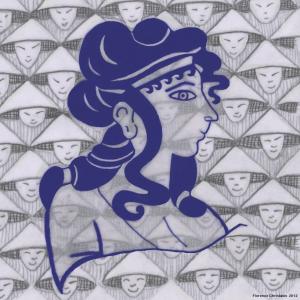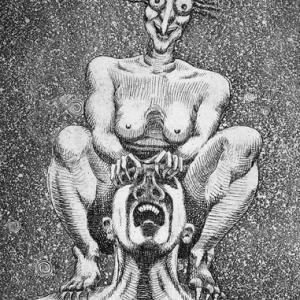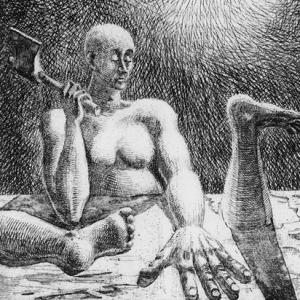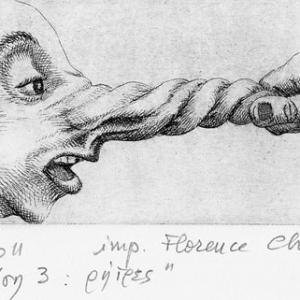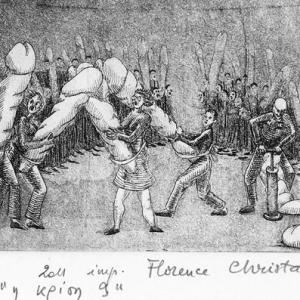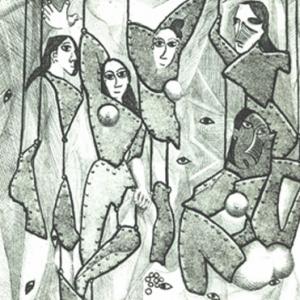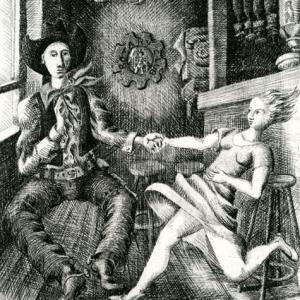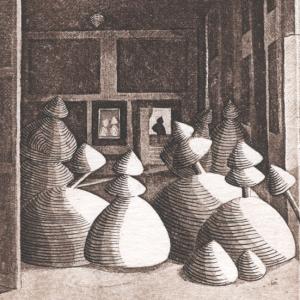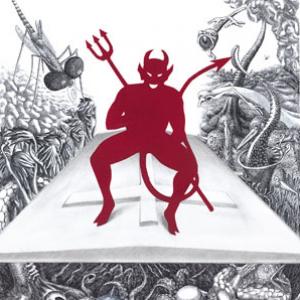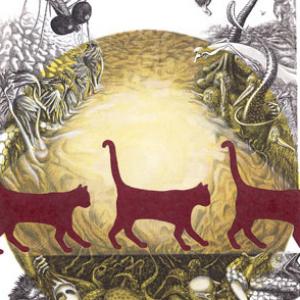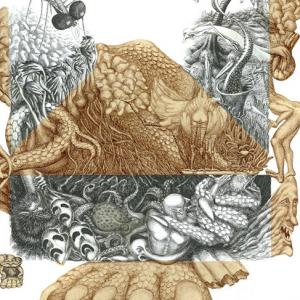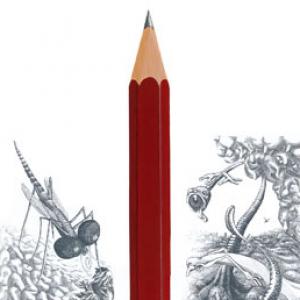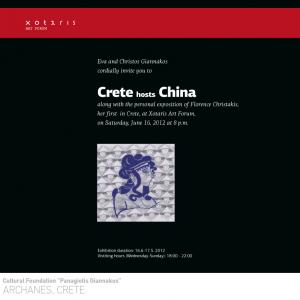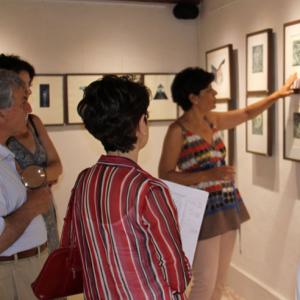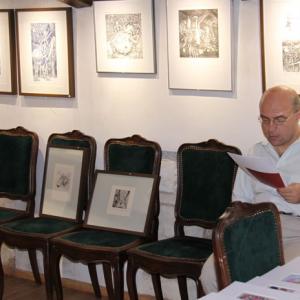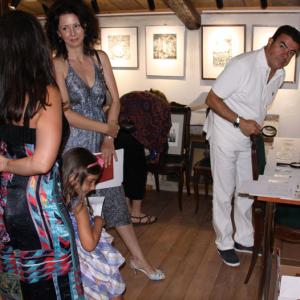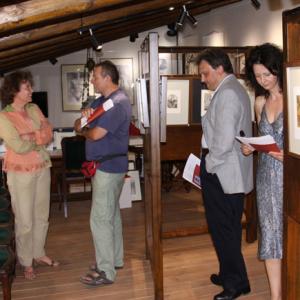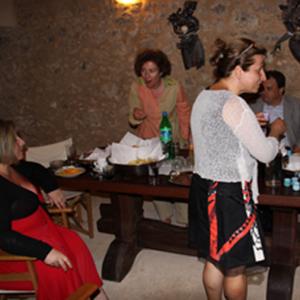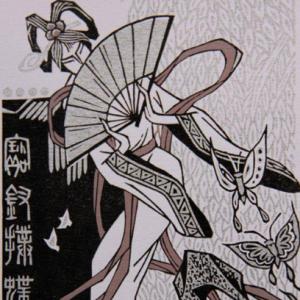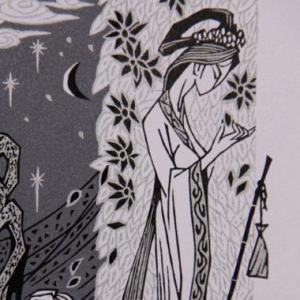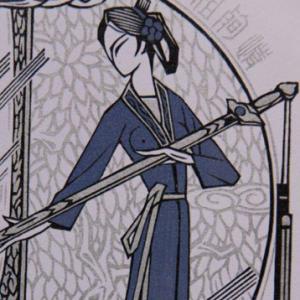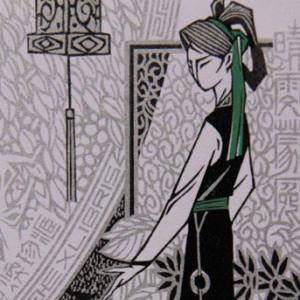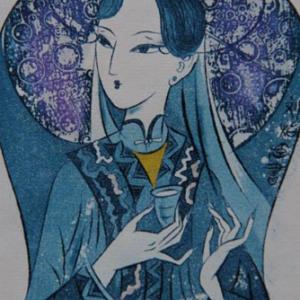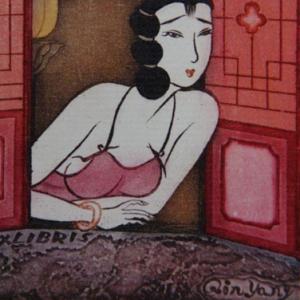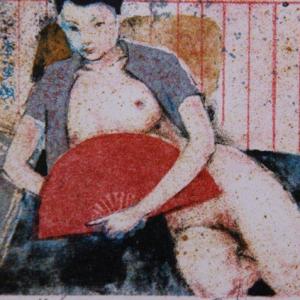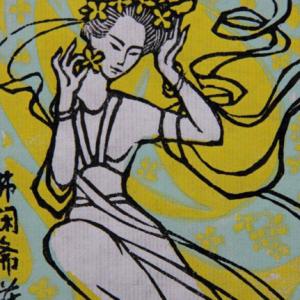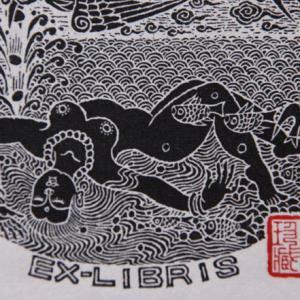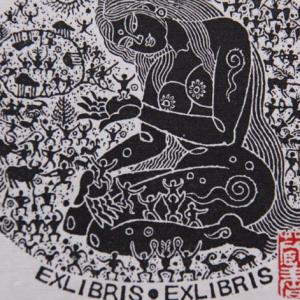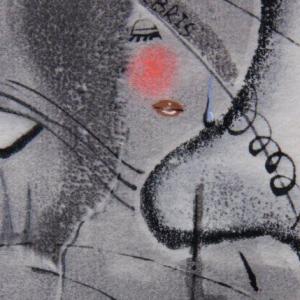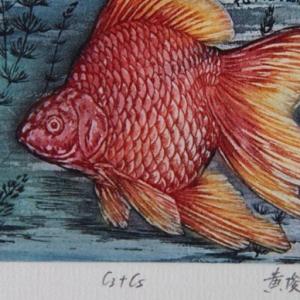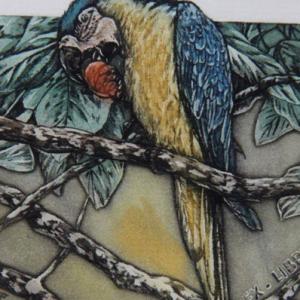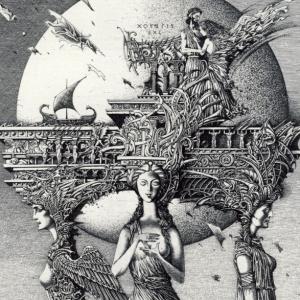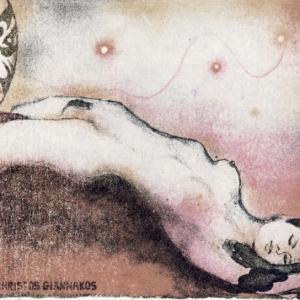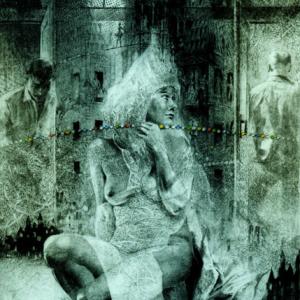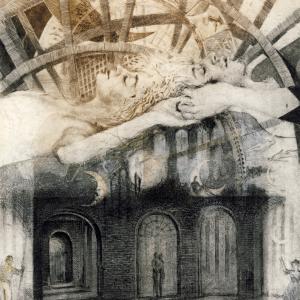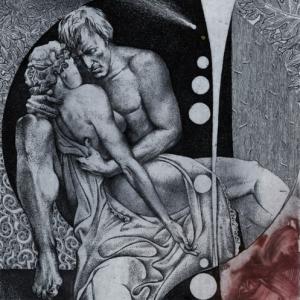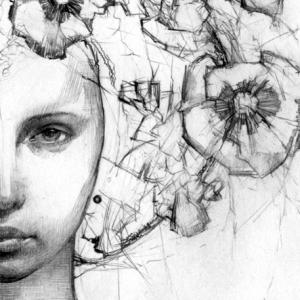
Crete hosts China along with the solo exhibition of Florence Christakis.
16/06/2012 - 15/07/2012
June 2012. Xotaris Art Forum welcomes the Chinese printmaking art works in conjunction with etchings by the Greek-French artist Florence Christakis.
"Crete hosts China" along with the personal exposition of Florence Christakis, her first in Crete.Xotaris Art Forum presents a variety of Chinese printmaking art works, as a small sample of its collection. A completely different kind of engraving art that was almost unknown in Greece.
The Exhibition starts on
June 16th, 2012 (Saturday) and
Ends on
July 15th, 2012 (Sunday).
Daily 18:00 t0 22:00. Monday and Tuesday closed.
Opening ceremony Saturday, June 16th, 2012 at 20:00
Links:
Shanghai Chinese Engraving Art.
Defining, tracing a point is like sowing a seed that must sprout and grow. (Chinese verses)
Chinese Engraving
The first woodcuts of images and characters took place during T’ang dynasty (618-906 AC) as the first emperors of this dynasty were tolerant to a variety of religious doctrines –Buddhism, Christianity, Taoism and Confucianism.
The emperor T’ai-Tsung of the T’and Dynasty (627-49 AC) founded a library of approximately 54.000 papyruses in his capital. In a cave of the Buddhist colony Tun-Huang in Chinese Turkestan (founded in 366 AC) Sir Aurel Stein discovered one of the greatest printed treasures in 1907, which contained thousands of well preserved eilitaria (rolls consisting of a long strip of parchment, where the text was written continuously, parallel to the narrow side and on both sides), among which the Diamond Sutra, long 5,10m dated 868 AC.
The biggest part of the woodcuts was created for devotional reasons. Innumerous representations of Buddha were found, printed in different ways on paper, often large rolls, like the one in the British Museum, 5m long and covered with 480 different depictions of the same image.
The first Chinese printings were made with black ink made of burnt wood or polish mixed with glue and dissolved in water. Cinnabar was the second most popular color that is being used up to now. Wood, usually from pear or jujube trees, was rectangular, cut in small pieces. The picture is printed on the paper that has been stuck backward on the moist surface and is cut with knife.
The Mongolian invasion came along with some early efforts of publishing books on medicine, botanology, agriculture, poetry and literature with attracting titles such as Beautiful Women Who from Dynasty Overturned Empires. The most famous work published was a Buddhist canon name Tripitaka consisting of 5.048 volumes with 130.000 woodcuts for equal number of pages. It was published in Ch'eng-Tu from 972-83.
Copper engraving was first introduced during the Five Dynasties period (909-960 AC), But it seems that it did not prevailed, perhaps because of the difficulties in printing large works.
Less sophisticated subjects for popular engravings were the House Gods or Door Guardians, roughly cut and often colored in hand, reminding those of the beginning of Ming Dynasty or even earlier. One of the most ambitious developments in printing was the meeting of animated characters with paper.
Uighur Turks carved letters on wood, an especially difficult task, if you think that 30.000 characters were carved on different pieces. Paul Pelliot found some samples in the caves of Tun-huand dating back to 1300.
A stable progress in cutting and casting was made up to 1403, when the first foundry was founded by the state. This was quite important as from that time forward it would be possible to publish a great number of books, fifty years before Gutenberg. The only innovation in Gutenberg’s work, in comparison to this of China, was the perfection of the cast .
Chinese books with colored plates were published in 1606 starting with a work with stamps (ink cakes), printed in six colors. Two famous album manuals followed, Ten Bamboo Hall Painting Book (sixteen volumes dated 1633), a collection of exercises in drawing birds, fruits and flowers, and in the 17th century Mustard Seed Garden Manual. These works are a milestone in the history of printed books for their beauty and mastery.
It seems though that Chinese noble printing lost gradually its power and attraction. Therefore, it served as an inspiration source and contributed to the flourishment of the popular style of printing in Japan, known as Ukiyo-e.
Chinese Engraving
It was about 105 AC that according to some sources, a rather important event took place in China: the invention of paper; finally a material ready to accept the imprint of an inked surface.
It is sure though that even before paper invention, Chinese people used ink in different colors for their engraved stamps on silk and other tissues. The word yin, stamp in Chinese, is being used for any type of representation on all surfaces, from clay to paper. In order to print out some currency during Kublai Khan’s reign (apr. 1287 AC), they used a kind of stamp carved into copper plates.
The chronicles from Later Han dynasty (206 bC-221 AC) mention that the engraved stone slabs of the Six Classics can be found on the gates of the Royal Academy. China had become the home of the greatest printing and publishing company in the world long before Gutenberg’s era.
It is sure though that even before paper invention, Chinese people used ink in different colors for their engraved stamps on silk and other tissues. The word yin, stamp in Chinese, is being used for any type of representation on all surfaces, from clay to paper. In order to print out some currency during Kublai Khan’s reign (apr. 1287 AC), they used a kind of stamp carved into copper plates.
The chronicles from Later Han dynasty (206 bC-221 AC) mention that the engraved stone slabs of the Six Classics can be found on the gates of the Royal Academy. China had become the home of the greatest printing and publishing company in the world long before Gutenberg’s era.
The first woodcuts of images and characters took place during T’ang dynasty (618-906 AC) as the first emperors of this dynasty were tolerant to a variety of religious doctrines –Buddhism, Christianity, Taoism and Confucianism.
The emperor T’ai-Tsung of the T’and Dynasty (627-49 AC) founded a library of approximately 54.000 papyruses in his capital. In a cave of the Buddhist colony Tun-Huang in Chinese Turkestan (founded in 366 AC) Sir Aurel Stein discovered one of the greatest printed treasures in 1907, which contained thousands of well preserved eilitaria (rolls consisting of a long strip of parchment, where the text was written continuously, parallel to the narrow side and on both sides), among which the Diamond Sutra, long 5,10m dated 868 AC.
The biggest part of the woodcuts was created for devotional reasons. Innumerous representations of Buddha were found, printed in different ways on paper, often large rolls, like the one in the British Museum, 5m long and covered with 480 different depictions of the same image.
The first Chinese printings were made with black ink made of burnt wood or polish mixed with glue and dissolved in water. Cinnabar was the second most popular color that is being used up to now. Wood, usually from pear or jujube trees, was rectangular, cut in small pieces. The picture is printed on the paper that has been stuck backward on the moist surface and is cut with knife.
The Mongolian invasion came along with some early efforts of publishing books on medicine, botanology, agriculture, poetry and literature with attracting titles such as Beautiful Women Who from Dynasty Overturned Empires. The most famous work published was a Buddhist canon name Tripitaka consisting of 5.048 volumes with 130.000 woodcuts for equal number of pages. It was published in Ch'eng-Tu from 972-83.
Copper engraving was first introduced during the Five Dynasties period (909-960 AC), But it seems that it did not prevailed, perhaps because of the difficulties in printing large works.
Less sophisticated subjects for popular engravings were the House Gods or Door Guardians, roughly cut and often colored in hand, reminding those of the beginning of Ming Dynasty or even earlier. One of the most ambitious developments in printing was the meeting of animated characters with paper.
Uighur Turks carved letters on wood, an especially difficult task, if you think that 30.000 characters were carved on different pieces. Paul Pelliot found some samples in the caves of Tun-huand dating back to 1300.
A stable progress in cutting and casting was made up to 1403, when the first foundry was founded by the state. This was quite important as from that time forward it would be possible to publish a great number of books, fifty years before Gutenberg. The only innovation in Gutenberg’s work, in comparison to this of China, was the perfection of the cast .
Chinese books with colored plates were published in 1606 starting with a work with stamps (ink cakes), printed in six colors. Two famous album manuals followed, Ten Bamboo Hall Painting Book (sixteen volumes dated 1633), a collection of exercises in drawing birds, fruits and flowers, and in the 17th century Mustard Seed Garden Manual. These works are a milestone in the history of printed books for their beauty and mastery.
It seems though that Chinese noble printing lost gradually its power and attraction. Therefore, it served as an inspiration source and contributed to the flourishment of the popular style of printing in Japan, known as Ukiyo-e.
Research Stamatia Antonatou.
| S | M | T | W | T | F | S |
| 1 | 2 | 3 | 4 | 5 | 6 | |
| 7 | 8 | 9 | 10 | 11 | 12 | 13 |
| 14 | 15 | 16 | 17 | 18 | 19 | 20 |
| 21 | 22 | 23 | 24 | 25 | 26 | 27 |
| 28 | 29 | 30 |






